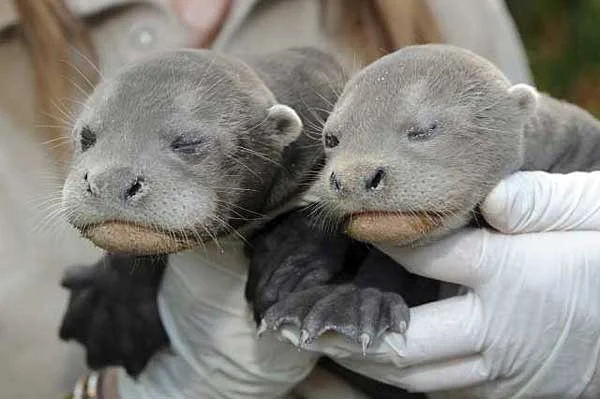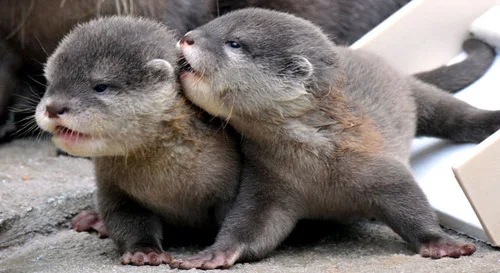Sea Otter (Enhydra lutris)

The sea otter (Enhydra lutris) is a marine mammal native to the coasts of the northern and eastern North Pacific Ocean. Adult sea otters typically weigh between 14 and 45 kg (31 and 99 lb), making them the heaviest members of the weasel family, but among the smallest marine mammals. Unlike most marine mammals, the sea otter's primary form of insulation is an exceptionally thick coat of fur, the densest in the animal kingdom. Although it can walk on land, the sea otter lives mostly in the ocean.
This aquatic member of the weasel family is found along the coasts of the Pacific Ocean in North America and Asia. The sea otter spends most of its time in the water but, in some locations, comes ashore to sleep or rest. Sea otters have webbed feet, water-repellent fur to keep them dry and warm, and nostrils and ears that close in the water.
Sea otters often float at the water's surface, lying on their backs in a posture of serene repose. They sleep this way, often gathered in groups. Otters sometimes float in forests of kelp, or giant seaweed, in which they entangle themselves to provide anchorage in the swirling sea.
These aquatic otters do more than sleep while floating on their backs. They are often seen with a clam or mussel and a rock that has been deftly snared from the ocean floor. Otters will place the rock on their chests, and repeatedly smash the shellfish against it until it breaks open to reveal the tasty meal inside. They also dine on such aquatic creatures as sea urchins, crabs, squid, octopuses, and fish.
Sea otters are the only otters to give birth in the water. Mothers nurture their young while floating on their backs. They hold infants on their chests to nurse them, and quickly teach them to swim and hunt.
Sea otters are meticulously clean. After eating, they wash themselves in the ocean, cleaning their coat with their teeth and paws. They have good reason to take care of their coats—it helps them to remain waterproof and insulated against the cold. Sea otters have thick underfur that traps air to form an insulating layer against the chilly waters (they have no insulating fat). This coat is invaluable to otters, but it has worth to some humans as well.
Sea otters were hunted for their fur to the point of near extinction. Early in the 20th century only 1,000 to 2,000 animals remained. Today, 100,000 to 150,000 sea otters are protected by law.
Fast Facts about Sea Otter
Type: Mammal
Diet: Carnivore
Average life span in the wild: Up to 23 years
Size: 4 ft (1.25 m)
Weight: 65 lbs (30 kg)
Protection status: Threatened
Courtesy : http://animals.nationalgeographic.com
Sea Otter Images / Pictures































0 Comments